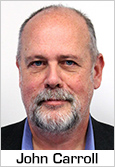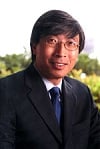 Patrick Soon-Shiong made several fortunes based on his understanding of cancer and drug development, most recently in today's multibillion-dollar IPO for NantKwest ($NK). And now he plans to put the IPO money to use in pursuit of a new strategy in immuno-oncology R&D--the single hottest field in the industry.
Patrick Soon-Shiong made several fortunes based on his understanding of cancer and drug development, most recently in today's multibillion-dollar IPO for NantKwest ($NK). And now he plans to put the IPO money to use in pursuit of a new strategy in immuno-oncology R&D--the single hottest field in the industry.
"It's not the money I'm focusing on," Soon-Shiong told me today as NantKwest's market cap hovered north of a $3 billion opening-day mark. "It's the science."
The money is following the science, he says. There are real, game-changing drugs in the pipeline now, he adds, as we're seeing with the first checkpoint inhibitors and the first round of rapid approvals for Opdivo and Keytruda. So not surprisingly you'll find him opposite the camp that sees the 10-figure sums now in play in the industry as evidence of an overheated bull market that's creating a dangerous bubble for investors.
 |
| Patrick Soon-Shiong |
"I think it's a real phenomenon and a sustainable one," says the NantKwest CEO. "This is not a cure," he says about NantKwest's approach, "but you put yourself for the first time on the path. What we've done with NantKwest is the beginning of that path."
Soon-Shiong is shrugging off some of the pioneering work being done on CAR-Ts, reengineering patient-derived T cells with chimeric antigen receptors to put them in the hunt for cancer cells. That's work that has been central to biotechs like Juno ($JUNO), Kite ($KITE) and now Celgene ($CELG), following its big tie-up with Juno, and others.
So here's Soon-Shiong's R&D strategy to vault into the lead of a large and rapidly growing pack of rivals.
He says it all dates back to his first paper, which focused on natural killer cells 25 years ago.
"Our human bodies have evolved," he says. "These receptors on NK cells occurred 500 million years ago in the ocean and they evolved so that it would overcome viral infections in mammalian species." Once the NK cells lock onto their target, they call T cells into the microenvironment to destroy the target. But cancer cells developed receptors that "outsmarted" NK cells, creating receptors that left the NK cells dormant or "sleeping."
What distinguishes NantKwest, Soon-Shiong adds, is that the company discovered NK cell lines that can't be faked out by cancer cells.
Says Soon-Shiong: "I saw this company (when it was named Conkwest) in 2006. We've been very patient in building this platform."
The most advanced work is being done on aNKs, which he says are "innately available for any virally local cell carcinoma," with the lead drug headed into a Phase II study. Soon-Shiong believes these aNKs (part of a lineup of activated NK cells which includes what he calls "CARs in a bottle") can be readily manufactured in large, off-the-shelf commercial quantities that can outperform any of the patient-derived CARs now in the pipeline.
Those aNKs have been genetically modified into haNKs, with CD16 receptors that bind to Rituxan, Herceptin and Erbitux and create new drug conjugates with an amped-up, cancer-cell-killing design. And as only about 10% to 20% of the patient population for mAb therapies carry high-affinity CD16 receptors, NantKwest believes it's on a unique path that could relate to a large group of potential patients.
And finally there are taNKs, which are modified with chimeric antigen receptors that bind to targets on the cancer cell. These taNKs can be applied to checkpoint receptors like PD-L1, expressed on cancer cells, cell surface antigens such as HER-2, CD33 and ROR1, newly found neoepitopes and surface receptors found on cancer stem cells--a big target believed to spur the most aggressive types of cancer.
If he's right, Soon-Shiong is on the right path to sealing his rep as a serial biotech billionaire. One serious misstep would threaten to break one of the most successful strings in biotech's 30-year history. -- John Carroll (email | Twitter)